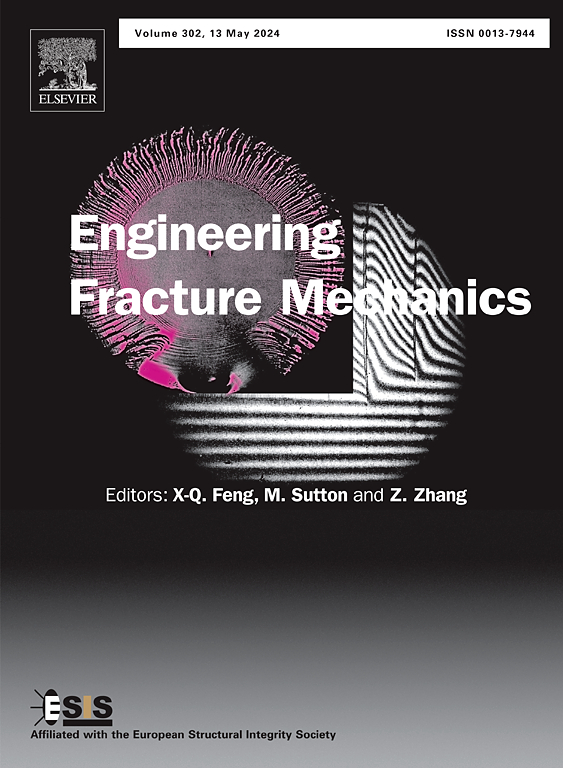In-situ experimental investigation of the small fatigue crack behavior in CP-Ti: The influence of loading parameters and directions
IF 5.3
2区 工程技术
Q1 MECHANICS
引用次数: 0
Abstract
This study quantitatively investigates the influence of loading parameters and directions on the behavior of small fatigue cracks (SFC) in commercially pure titanium (CP-Ti). It is observed that reductions in peak stress and increases in stress ratio correlate with a decrease in SFC growth rate and an intensification of growth rate fluctuations. Notably, crack growth along the transverse direction (TD) generally exhibits lower rates compared to that along the rolling direction (RD), with more pronounced fluctuations. Through metallographic analysis of crack paths, roughness-induced crack closure (RICC) is identified as a significant factor contributing to the observed variations in SFC growth behavior under different loading conditions. Furthermore, electron backscatter diffraction (EBSD) characterization reveals that crack propagation along the RD is primarily governed by prismatic slip, while TD samples exhibit more engagement of non-prismatic slip systems with higher activation stress. This results in a more tortuous crack path and pronounced crack arrest phenomena. Finally, a modified multi-scale rate prediction model based on the reference stress ratio method is proposed. Comparative analysis demonstrates that the modified model outperforms existing models by offering enhanced predictive capability across diverse loading conditions, thereby reinforcing its robustness in predicting SFC behavior of CP-Ti.

CP-Ti小疲劳裂纹行为的原位试验研究:加载参数和方向的影响
本文定量研究了加载参数和方向对纯钛(CP-Ti)小疲劳裂纹(SFC)行为的影响。可以观察到,峰值应力的降低和应力比的增加与SFC生长速率的降低和生长速率波动的加剧有关。值得注意的是,裂纹沿横向(TD)的扩展速率通常低于沿滚动方向(RD)的扩展速率,并且具有更明显的波动。通过裂纹路径的金相分析,确定了粗糙度裂纹闭合(RICC)是导致不同加载条件下SFC生长行为变化的重要因素。此外,电子背散射衍射(EBSD)表征表明,沿RD的裂纹扩展主要受棱柱滑移的控制,而TD样品表现出更多的非棱柱滑移系统的参与,具有更高的激活应力。这导致裂纹路径更加曲折,裂纹止裂现象明显。最后,提出了一种改进的基于参考应力比法的多尺度速率预测模型。对比分析表明,改进后的模型在不同加载条件下的预测能力增强,优于现有模型,从而增强了其预测CP-Ti的SFC行为的鲁棒性。
本文章由计算机程序翻译,如有差异,请以英文原文为准。
求助全文
约1分钟内获得全文
求助全文
来源期刊
CiteScore
8.70
自引率
13.00%
发文量
606
审稿时长
74 days
期刊介绍:
EFM covers a broad range of topics in fracture mechanics to be of interest and use to both researchers and practitioners. Contributions are welcome which address the fracture behavior of conventional engineering material systems as well as newly emerging material systems. Contributions on developments in the areas of mechanics and materials science strongly related to fracture mechanics are also welcome. Papers on fatigue are welcome if they treat the fatigue process using the methods of fracture mechanics.

 求助内容:
求助内容: 应助结果提醒方式:
应助结果提醒方式:


